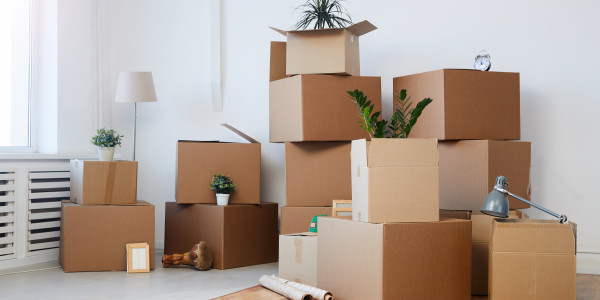What’s covered in this article – click on a link to learn more:
Moving is never a small feat, especially when it involves uprooting a family from the cozy confines of a large country house and repotting them in tighter quarters. My most recent move involved downsizing and a full-scale change of location, and as a father of two young kids, ensuring the safety, comfort, and vibrancy of our new neighborhood became my top priority when deciding where to move.
In this article, I’ll share some creative ways I discovered to vet our new seaside community, using online resources, personal exploration, and a keen eye for family-friendly features. These neighborhood research methods can work no matter your demographic or life situation. So whether you’re single or married, a student or a retiree, or just a wanderlust in search of greener pastures, use these tips and tactics for evaluating a neighborhood for relocation.
Neighborhood Research
At this point, is there anything the Internet can’t do? As we all know, it’s an invaluable research tool, and of course it’s an essential tool to research a neighborhood before moving. Here are some valuable resources to find out information on neighborhoods.
Despite me living overseas, Nextdoor proved to be an investigatory dream. This hyperlocal social networking app provided first hand insights from current residents of various neighborhoods we were considering and was a treasure trove of area recommendations, current happenings, and anecdotes about life in the neighborhood.
Community Facebook Groups were also good sources of information on neighborhoods, perfect for connecting with neighbors, finding a homeschool cooperative, and creating a sense of community even before setting foot in our new home.
Though not available in my neck of the woods, Neighborhoodscout is a great option for anyone wanting to use a data-driven approach to finding the perfect neighborhood to move into. Aggregating data from multiple sources, including the FBI and U.S. Census Bureau, the site offers comprehensive statistics about a whole host of things, including:
- Crime Rates
- School Quality (including student-to-teacher ratios and academic performance metrics)
- Real Estate Market Trends
- Demographics to help you get a feel for the makeup of the community, like density, age distribution, ethnic diversity, and socioeconomic indicators
- Local Employment Stats
- Housing Stats
- Cost of Living (crucial for managing a budget or for those on a fixed income)
- Transport (including available public transit options and commuting estimates)
- Environmental Hazards, like risk of floods, earthquakes, or other natural disasters
- Quality of Life Index, a metric that speaks to a neighborhood’s overall desirability
This information can really come in handy when evaluating a neighborhood based on specific priorities and preferences.
Check Safety of Neighborhood
It doesn’t matter whether you’re a family of four or a couple about to embark on a retirement adventure, ensuring your safety is an important consideration. An in-person visit is the best way to get a feel for the overall safety of the neighborhoods you’re considering moving to, but if that’s not an option, the next best thing would be to consider the insights of local residents and community members who have direct experience with the area. Here are some resources you can use to check neighborhood safety.
Those in the U.S. may want to check in on some databases like the National Sex Offender Public Website (NSOPW) and the FBI Crime Data Explorer. These are centralized resources that provide information about the specific location of registered sex offenders, and crime statistics on various offenses, including violent crimes and property crimes, for a specific area at the local, state, and national levels.
City Protect is another platform that allows you to check out a neighborhood before moving by providing up-to-date crime data, alerts and general safety information. Safety is a multi-faceted consideration, and a comprehensive approach can help you make an informed decision.
Don’t be afraid to pick up the phone and make a call to local police departments to check on things like safe walkability and adequate street lighting. My local authorities were happy to share an overview and their perspectives, as well as direct me to other useful community resources.
Finding Good Schools
As homeschoolers, the educational landscape was important in our decision-making process, but involved searching for homeschool groups, rather than trips to area schools. In-person visits and current local residents can play a big role in helping you make the final decision on your childrens’ educational options.
If you’re in the U.S., you’ve got some great resources to use to research a neighborhood’s school systems.
- GreatSchools
- Safe Routes to School
- HSLDA Making homeschooling possible
- Coalition for Responsible Home Education (CRHE)
GreatSchools is a site that offers ratings and reviews of nearby schools, and safety concerns can be addressed through the Safe Routes to School initiative, ensuring that your kids will be secure on their trip to and from school.
Check Out The Neighborhood
Once armed with digital insights, I’d suggest putting boots on the ground and exploring the neighborhoods you’re considering in person. My wife and I left the kiddos with a family friend and headed out for an eight-hour drive so we could get an overnight in what would soon become our new community. This gave us a chance to see the apartment complex and briefly explore the town and surrounding areas.
While we focused on family-friendly aspects, like walkability, the general demographics of the area, our proximity to shops, the library, the medical center, parks and the nearest beaches, no matter what stage of life you’re in, make sure you check out what’s most important to you.
Empty nesters might want to investigate recreational areas and walking trails, the makeup of the community, senior services and available healthcare facilities, while young professionals will likely want to test out any commute (remember time of day matters a lot!), investigate how you can have a good work-life balance, check out local social activities and nightlife, and consider the future outlook of the neighborhood, including potential growth or decline.
One special consideration to make when exploring is that the time of day is important. The same street that seems tranquil in the morning, may transform into a bustling community hub in the evening. A firsthand exploration will allow you to get a feel for these dynamics, and ensure that the area is what you’re envisioning and aligns with your lifestyle. What it comes down to is a gut check. You’re designing your future, so trust your instincts!
Navigating the digital seas and exploring the neighborhood with a discerning eye proved to be crucial steps for us, and should be musts when considering how to research a neighborhood for a move. Remember that the process is as important as the final decision. During transitional times, it’s important to choose a new community that is flourishing and meets your specific requirements. Only then will you be able to find a place to call home that is welcoming, secure, and right for you.





